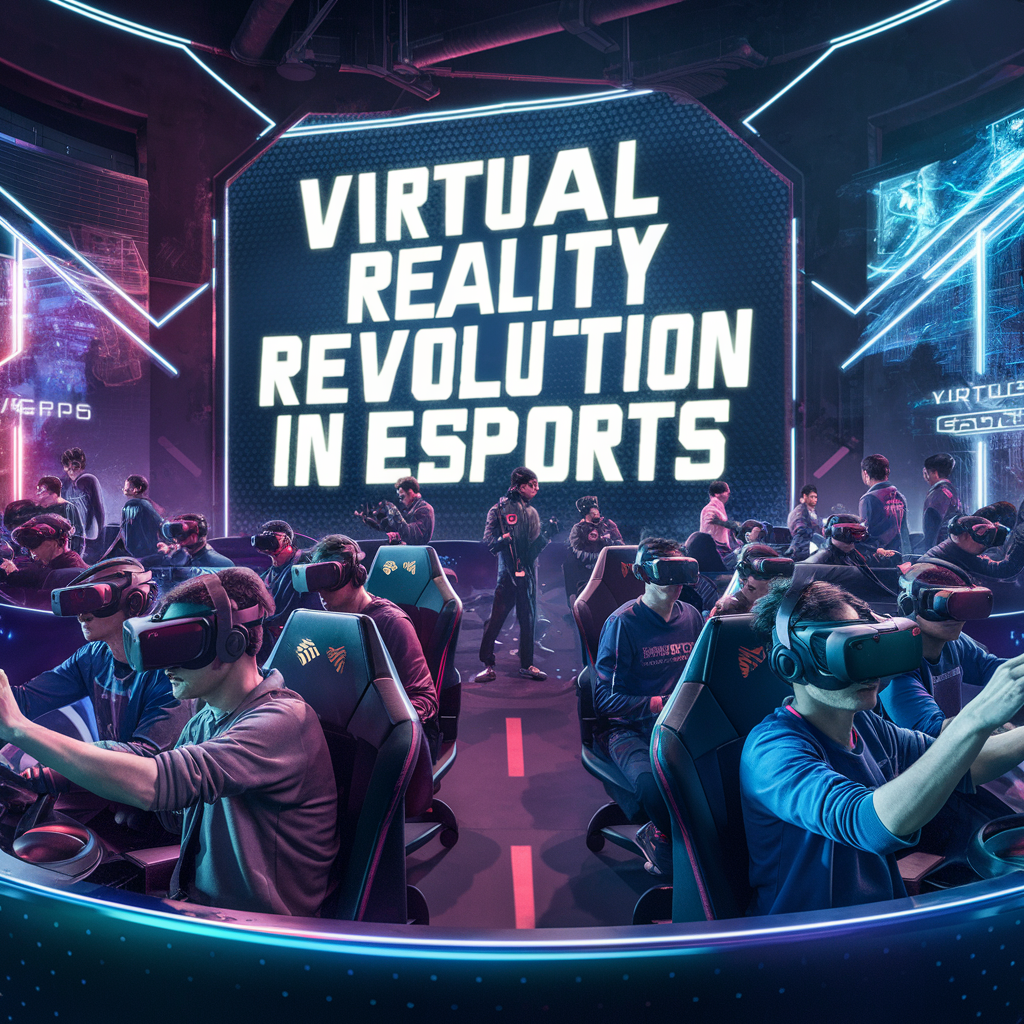In the dynamic world of esports, where innovation is the norm and boundaries are constantly pushed, 2024 marks a significant milestone with the advent of the virtual reality (VR) revolution. As technology continues to evolve at a rapid pace, virtual reality has emerged as a game-changer, offering immersive experiences that redefine how players and audiences engage with competitive gaming. In this article, we delve into the impact of virtual reality on esports and explore the exciting developments that have unfolded in 2024.
The Rise of Virtual Reality in Esports
Virtual reality has been steadily gaining traction in the esports landscape, offering players and fans a new dimension of engagement and immersion. With VR technology becoming more accessible and affordable, esports organizations, esports betting and game developers have been quick to capitalize on its potential. From VR-exclusive tournaments to integrating VR features into existing titles, the esports industry has embraced this transformative technology with open arms.
One of the key drivers behind the rise of VR in esports is its ability to provide unparalleled immersion. Unlike traditional gaming experiences, where players interact with a two-dimensional screen, virtual reality transports them into a fully immersive digital environment. Whether it’s stepping onto the virtual battlefield or navigating intricate landscapes, VR enables players to experience games in a way that was previously unimaginable.
Furthermore, virtual reality has the power to democratize esports by breaking down barriers to entry. In the past, competitive gaming often required expensive hardware and specialized equipment. However, with VR headsets becoming more affordable and accessible, aspiring players from diverse backgrounds can now participate in esports competitions without breaking the bank. This inclusivity has the potential to revolutionize the esports landscape, fostering a more diverse and vibrant community of players.
The Impact on Gameplay and Spectator Experience
Virtual reality introduces a level of immersion and interaction previously unattainable in traditional gaming setups. VR headsets transport players into rich, three-dimensional environments where they can physically move, interact with objects, and engage in gameplay using intuitive motions. This heightened sense of immersion not only enhances the overall gaming experience but also introduces new dimensions of strategy and skill expression.
In VR esports titles, players must rely on their physical dexterity and spatial awareness to navigate virtual worlds and outmaneuver opponents. From wielding virtual weapons to executing precise movements, VR gameplay requires a level of physical engagement that adds depth and intensity to competitive gaming. As a result, VR esports demand a unique combination of cognitive abilities, reflexes, and spatial awareness, challenging players to adapt and excel in dynamic virtual environments.
Moreover, the immersive nature of VR gameplay fosters a deeper connection between players and their virtual avatars, blurring the lines between the real world and the digital realm. This sense of embodiment enhances players’ sense of agency and presence within the game, elevating the overall gaming experience to new heights.
Virtual reality has also revolutionized the way esports are watched and experienced by spectators. VR-enabled spectator modes and immersive viewing experiences allow fans to immerse themselves in the action as if they were physically present in the virtual arena. Instead of passively observing matches on a screen, spectators can teleport to different vantage points, explore virtual arenas, and interact with other viewers in real-time.
This level of engagement transforms esports events into interactive entertainment experiences, where spectators can feel like active participants rather than mere observers. Whether it’s cheering for their favorite team from the sidelines or witnessing jaw-dropping plays up close, VR spectators are fully immersed in the excitement and drama of competitive gaming.
Furthermore, VR technology opens up new possibilities for esports broadcasting and content creation. VR-compatible streaming platforms enable content creators to produce immersive experiences that transport viewers into the heart of the action. From live VR broadcasts of tournaments to interactive VR storytelling, the creative potential of this technology is limitless, allowing esports enthusiasts to engage with their favorite games in entirely new ways.
The Future of Virtual Reality in Esports
One of the key drivers of the future of VR in esports is the continuous evolution of VR hardware. As technology advances and VR hardware becomes more powerful, affordable, and user-friendly, we can expect to see a proliferation of VR devices tailored specifically for esports. From lightweight and ergonomic VR headsets to advanced motion controllers and haptic feedback devices, the next generation of VR hardware will offer players greater precision, comfort, and immersion.
Moreover, advancements in display technology, such as higher resolutions and faster refresh rates, will further enhance the visual fidelity and realism of VR experiences. This will be particularly important for esports, where split-second reactions and visual clarity can make all the difference between victory and defeat.
As VR technology matures, we can anticipate the emergence of a wider variety of VR esports titles spanning various genres and gameplay mechanics. While VR shooters and multiplayer experiences have been early adopters of the technology, we can expect to see VR versions of popular esports genres such as MOBAs (Multiplayer Online Battle Arenas), battle royales, and sports simulations.
Developers will also explore innovative ways to leverage VR technology to create unique and compelling esports experiences that take full advantage of the medium’s immersive capabilities. Whether it’s team-based cooperative gameplay, competitive puzzle-solving, or narrative-driven adventures, the future of VR esports is limited only by the imagination of game developers.
In addition to VR, augmented reality (AR) technology holds great promise for the future of esports. AR overlays digital content onto the real world, providing players and spectators with a blended experience that seamlessly integrates virtual elements into their physical surroundings. In the context of esports, AR could enhance live events by overlaying real-time statistics, player profiles, and interactive elements onto the physical arena.
Furthermore, AR could enable new forms of interactive spectator experiences, allowing fans to engage with esports events in innovative ways. Whether it’s scanning QR codes to unlock in-game rewards or participating in location-based AR challenges, the integration of AR technology has the potential to enrich the esports viewing experience and foster greater community engagement.
Conclusion
In 2024, the virtual reality revolution has firmly taken hold in the world of esports, transforming how we play, watch, and engage with competitive gaming. With its ability to provide unparalleled immersion, enhance gameplay, and revolutionize the spectator experience, virtual reality has become an integral part of the esports landscape. As we look to the future, the potential of VR in esports knows no bounds, promising even more thrilling experiences and groundbreaking innovations on the horizon.






